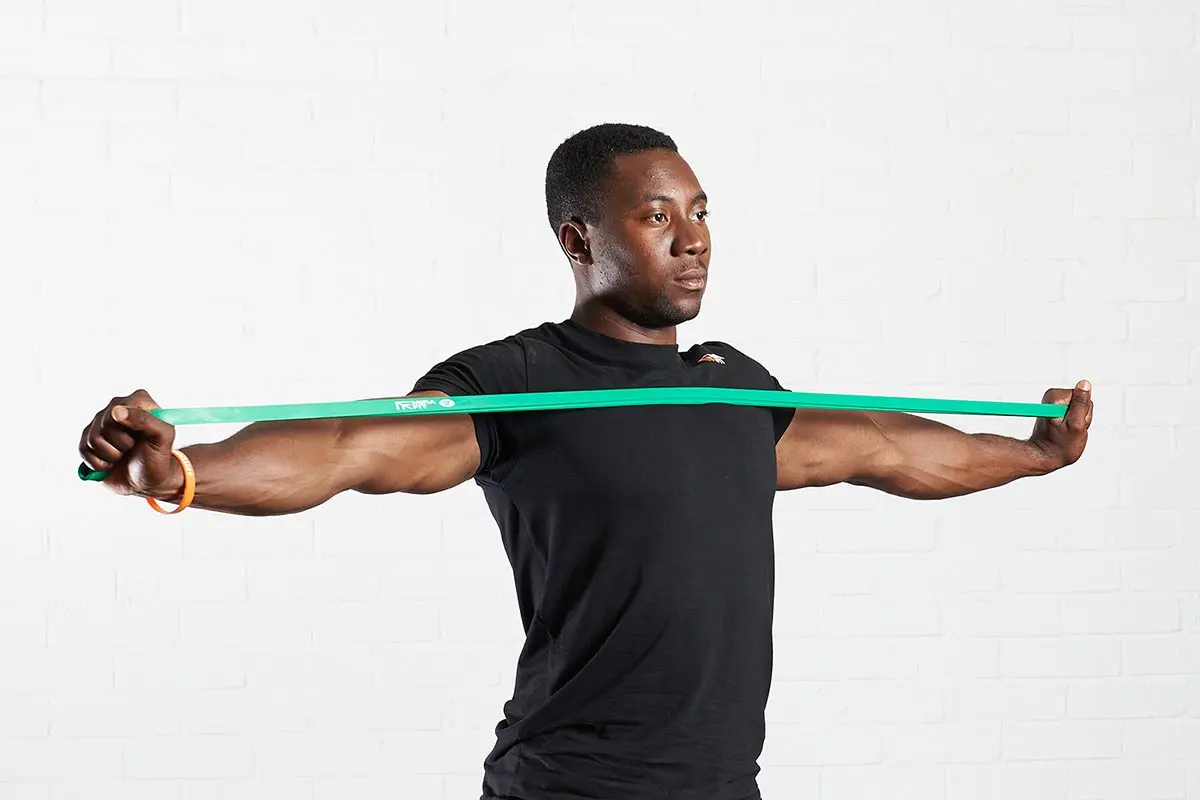Band Exercises for Shoulder Strength & Stability
Key Takeaways:
- Resistance bands are an excellent tool for improving shoulder strength, mobility, and stability.
- These exercises target the rotator cuff, scapular stabilizers, and shoulder girdle—key for injury prevention and recovery.
- Ideal for patients rehabbing from injuries like shoulder tendonitis, impingement, or rotator cuff issues.
- Bands are portable and low-impact, making them great for home therapy or travel workouts.
What are the best band exercises for shoulder strength?
The best resistance band exercises for shoulder strength include:
- External rotation (to strengthen rotator cuff)
- Internal rotation (to balance shoulder mechanics)
- Scapular retraction rows (for posture and stability)
- Shoulder flexion/abduction (for full range activation)
- Band pull-aparts (to target posterior deltoids and rhomboids)
These exercises help improve stability, mobility, and functional control—key for avoiding pain and preventing injury.
Why Use Resistance Bands for Shoulders?
Resistance bands offer variable resistance, which means they challenge your muscles throughout the entire range of motion—especially during the eccentric (lowering) phase. This enhances shoulder muscle control and mimics real-world movement patterns.
Benefits include:
- Joint-friendly resistance
- Progressive loading
- Increased activation of stabilizing muscles
- Great for both rehab and strength training
Essential Band Exercises for Shoulder Rehab & Strength
Below are evidence-based exercises commonly used in physical therapy and sports rehab programs.
1. External Rotation (with elbow at side)
- Target: Infraspinatus and teres minor (rotator cuff)
- How to: Anchor the band at waist height. With elbow bent at 90°, pull the band outward while keeping your elbow at your side.
- Why: Strengthens external rotators, which are often underused and key for shoulder health.
2. Internal Rotation
- Target: Subscapularis and pectoralis major
- How to: Same position as above, but pull the band inward across your body.
- Why: Balances shoulder strength and helps with shoulder stabilization.
3. Scapular Retraction Rows
- Target: Rhomboids, mid-traps, and rear delts
- How to: Anchor the band in front of you. Pull back with elbows close to your body, squeezing your shoulder blades.
- Why: Improves posture and scapular control—critical in shoulder rehab.
4. Band Pull-Aparts
- Target: Posterior deltoids and rhomboids
- How to: Hold a band in front of you at shoulder height and pull it apart horizontally.
- Why: Strengthens upper back and improves posture.
5. Shoulder Flexion with Band
- Target: Anterior deltoid
- How to: Step on one end of the band and lift your arm straight in front of you.
- Why: Builds front shoulder strength and supports everyday movements like reaching.
6. Overhead Band Press
- Target: Deltoids, upper traps, triceps
- How to: Step on the band and press upward like a shoulder press.
- Why: Builds full-range strength for return to functional activity or sport.
Tips for Success
- Perform each exercise 2–3 sets of 10–15 reps.
- Focus on form, control, and range, not just resistance.
- Always warm up beforehand and start with light resistance.
- Don’t push into sharp pain—some mild soreness is normal in rehab but pain should never worsen.
When to Use These Exercises
Resistance band shoulder exercises are commonly prescribed for:
- Shoulder tendonitis
- Impingement syndrome
- Rotator cuff injuries
- Post-surgical rehab
- General strengthening for athletes and seniors
These exercises are also helpful for desk workers and anyone dealing with postural strain or shoulder tightness.
Get Help from a Professional
While resistance bands are a great tool, they work best when prescribed as part of a customized one on one therapy plan. A licensed physical or occupational therapist can assess your movement patterns and design a routine that’s safe, effective, and progression-based. Whether you’re an athlete or simply want to restore daily function, our clinic offers expert care in a supportive, one-on-one setting.
Steven Cheung, DPT
Steven is the founder and lead physical therapist at SYNAPTIC Rehabilitation. He earned a BS in Exercise Science Applied Kinesiology from Rutgers University in New Brunswick, NJ and his Doctorate degree from American International College in Springfield, MA. Steven specializes in movement disorders such as Parkinson’s disease and many other neurological disorders. Outside of practicing physical therapy Steven enjoys time with his wife, running, and staying active.

